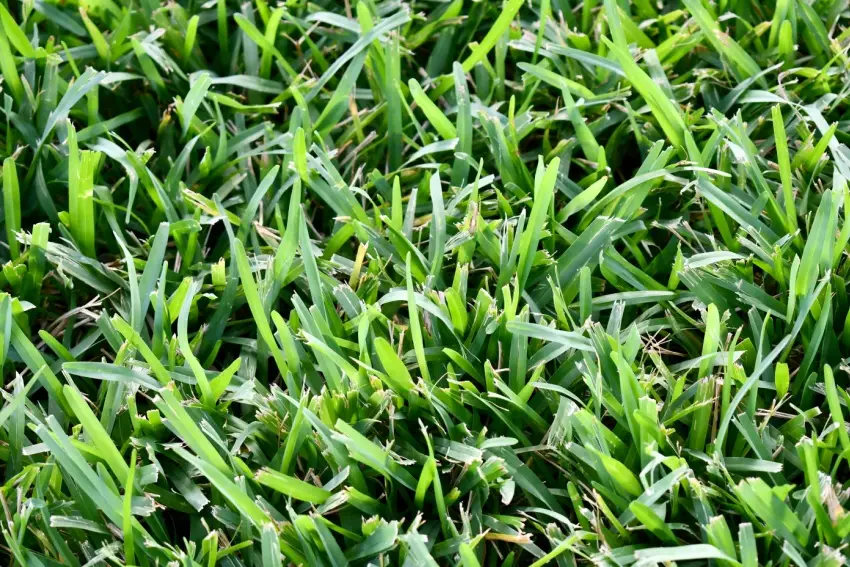
The Grounds Guys provide expert guidance on maintaining St. Augustine grass:
|
In the southern part of the United States, particularly on the Gulf Coast, you need a special type of grass for your lawn. Look for turfgrass that can handle long, hot summers and does well in saltier climates (especially if you live close to the coast). One type of turfgrass that checks all these boxes and offers a lush, tropical appearance is St. Augustine grass.
If you’ve lived in the South for any amount of time, chances are you’ve seen St. Augustine grass all over the place. It’s one of the most popular turfgrass options in the area — and with good reason.
What Is St. Augustine Grass?
Stenotaphrum secundatum, or St. Augustine grass, is a warm-season turfgrass commonly found in Florida, Texas, and along the Gulf Coast. It loves warm, humid climates and is notably tolerant of salt. It can handle shade better than many other warm-season grasses, but at its heart, St. Augustine is a sun-loving grass and does best in full sun.
St. Augustine will grow in USDA hardiness zones 7 through 12, but if you experience chillier winters, expect your lawn to go dormant. Your St. Augustine grass may turn brown and stop growing. Don’t worry. It’s not dead — just hibernating. It’ll come back to life when the warm weather returns.
What Does St. Augustine Grass Look Like?

St. Augustine grass is not only prized for its ability to get along well with the Southern climate, but it also offers homeowners and property managers a distinctive and pleasing aesthetic that makes it easily recognizable. St. Augustine has broad, coarse blades that boast a striking blue-green color. When well-maintained, they form a dense, carpet-like lawn with a cushiony feel and luxuriant appearance.
St. Augustine grass is so popular in the Gulf Coast region of the country that it has almost become synonymous with a warm and tropical aesthetic.
How to Plant and Grow St. Augustine Grass
When learning how to grow St. Augustine grass, you’ll find that it’s difficult to create a lawn from seed. Finding St. Augustine grass seed is actually quite a challenge. Most landscapers will suggest using sod or plugs. So, if you want to know how to plant St. Augustine grass, the best approach is to purchase sod from a turf farm or work with a landscaping company.
The good news is that St. Augustine sod typically establishes well once you put it down. In fact, you can start your lawn at any time during the growing season. Just make sure to water the sod consistently after you put it down to give its roots a boost.
When and How to Fertilize St. Augustine Grass
In order to keep your lawn lush, you’ll need to know when to fertilize your St. Augustine grass. Begin fertilizing in early spring when the grass shows signs of a green-up. Continue fertilizing every six to eight weeks throughout the growing season. Your final application should happen in the early fall, at least six weeks before the first frost.
So, what is the best fertilizer for St. Augustine grass? There are a lot of good options on the market. Look for a fertilizer with an NPK (nitrogen-phosphorus-potassium) ratio of 4-1-2, 3-1-2, or 3-0-0. Try to apply between 0.5 and 1 pounds of nitrogen per 1,000 square feet of lawn or 1.5 pounds of slow-release nitrogen per 1,000 square feet of lawn.
We often recommend that homeowners and property managers use slow-release fertilizers, as they provide steady nutrition while minimizing the risk of fertilizer burn.
How to Get St. Augustine Grass to Spread
St. Augustine grass spreads naturally using stolons, which are above-ground runners that create new growth points as they extend across your lawn. These thick stems are whitish or light green and grow horizontally along the soil surface. At regular intervals, each stolon develops nodes that produce both roots and new grass blades. This network of stolons creates a strong, interconnected system that gives St. Augustine that thick, carpet-like appearance.
You really don’t need to do much to get your St. Augustine grass to spread. The stolons can grow several inches per week during peak growing season. In other words, St. Augustine grass grows quickly on its own when conditions are favorable.
Your job is to take care of your lawn with the right amount of watering, fertilizer, and mowing to keep your grass strong and healthy.
Keep Your Lawn Lush with St. Augustine Grass
St. Augustine is one of your best options if you live in the southern part of the country. Other excellent choices include Bermuda grass, zoysia grass, centipede grass, and Bahia grass. If you treat your St. Augustine grass right, you’ll be rewarded with a beautiful, lush lawn that will beckon bare feet and encourage lots of time spent outdoors.
Not everyone has the time or desire to perform ongoing lawn maintenance, so the pros at The Grounds Guys® are here to help. We’re proud to offer residential and commercial lawn care and landscaping services. We’ll install St. Augustine sod and perform ongoing maintenance to ensure your lawn is always the envy of the neighborhood. Request a free estimate today.
This article is intended for general informational purposes only and may not be applicable to every situation. You are responsible for determining the proper course of action for your home and property. The Grounds Guys are not responsible for any damages that occur as a result of this blog content or your actions. For the most accurate guidance, contact The Grounds Guys location nearest you for a comprehensive, on-site assessment.